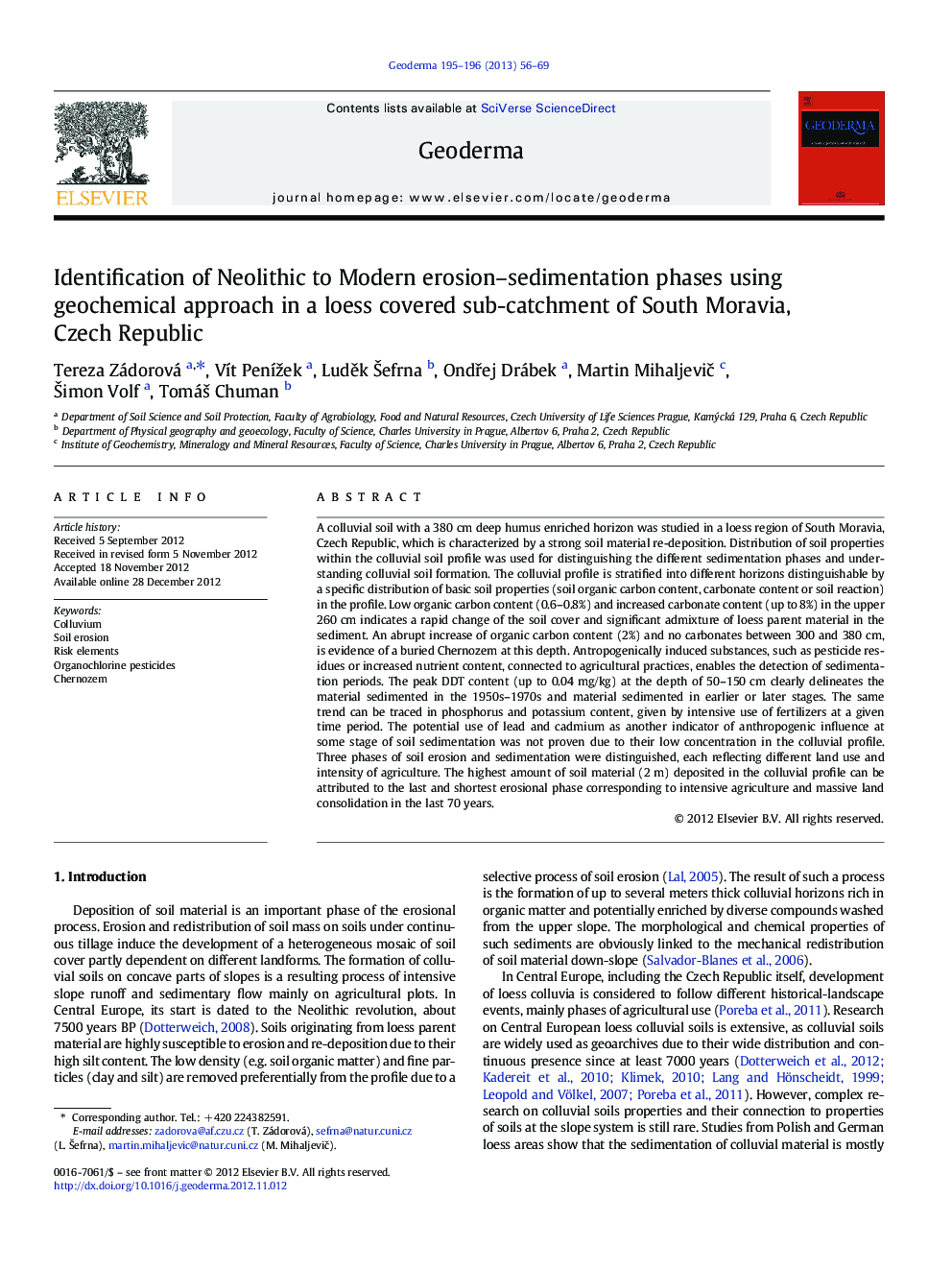| کد مقاله | کد نشریه | سال انتشار | مقاله انگلیسی | نسخه تمام متن |
|---|---|---|---|---|
| 4573542 | 1629489 | 2013 | 14 صفحه PDF | دانلود رایگان |

A colluvial soil with a 380 cm deep humus enriched horizon was studied in a loess region of South Moravia, Czech Republic, which is characterized by a strong soil material re-deposition. Distribution of soil properties within the colluvial soil profile was used for distinguishing the different sedimentation phases and understanding colluvial soil formation. The colluvial profile is stratified into different horizons distinguishable by a specific distribution of basic soil properties (soil organic carbon content, carbonate content or soil reaction) in the profile. Low organic carbon content (0.6–0.8%) and increased carbonate content (up to 8%) in the upper 260 cm indicates a rapid change of the soil cover and significant admixture of loess parent material in the sediment. An abrupt increase of organic carbon content (2%) and no carbonates between 300 and 380 cm, is evidence of a buried Chernozem at this depth. Antropogenically induced substances, such as pesticide residues or increased nutrient content, connected to agricultural practices, enables the detection of sedimentation periods. The peak DDT content (up to 0.04 mg/kg) at the depth of 50–150 cm clearly delineates the material sedimented in the 1950s–1970s and material sedimented in earlier or later stages. The same trend can be traced in phosphorus and potassium content, given by intensive use of fertilizers at a given time period. The potential use of lead and cadmium as another indicator of anthropogenic influence at some stage of soil sedimentation was not proven due to their low concentration in the colluvial profile. Three phases of soil erosion and sedimentation were distinguished, each reflecting different land use and intensity of agriculture. The highest amount of soil material (2 m) deposited in the colluvial profile can be attributed to the last and shortest erosional phase corresponding to intensive agriculture and massive land consolidation in the last 70 years.
► Colluvial profile is stratified into different layers distinguishable by distribution of basic soil properties.
► Organic pollutants and nutrients showed a good potential in detection of modern and historic erosion.
► The highest amount of soil material deposited in the colluvial profile can be attributed to the last 70 years.
► Study brings an alternative to the traditional dating of soil sediments.
Journal: Geoderma - Volumes 195–196, March 2013, Pages 56–69